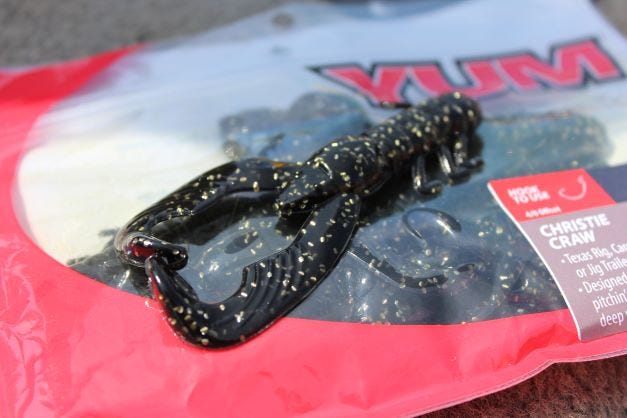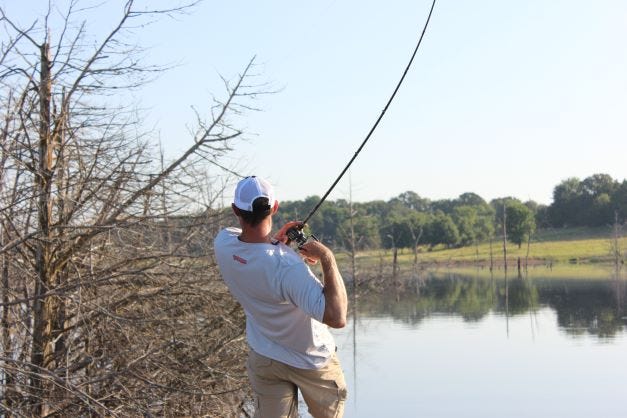- Aug 24, 2021
How to Punch Grass for BIG Summertime Bass
The heat of the summer sun leads bass to find some of the hardest to reach hiding spots all year, especially if grass is plentiful in your lake or river. When grass and grass mats are present, it can be an almost impossible search to find and catch big bass. Today, we are going to identify three objectives to identify, rig up, and effectively punch grass to find quality bass during the hot summertime.
- Identify the right grass/mats
This is without a doubt the most difficult part of the equation to punching grass because any lake or river that has it is going to have tons of it! For grass to be ripe to punch it needs to be thick enough that light almost can’t penetrate it, we typically call this a mat. These are prevalent in rivers or river system lakes such as Lake Guntersville in Alabama and prove to be excellent habitat for bass to conceal themselves in shade and ambush baitfish. To identify the right ones, you need to have a few key ingredients such as adjacency to deep water, forage, and growth. I check for grass near river channels because these seem to be the areas that bass can freely move in and out of as they feel throughout feeding periods. Forage is also key here, and to identify this you simply must look and hear. You can see baitfish, frogs, or other prey scurrying around or you can hear the sounds of bluegill or baitfish popping amongst the vegetation. Once you find some good-looking grass its only right to begin flipping and punching to try and draw some bites!
- Rigging up
The gear necessary to draw big bass out of thick grass is nothing short of broom handles and braided line, you need to bring the muscle! Depending upon how thick the cover is I go with a 7’6-8’ heavy action rod with a fast or extra fast tip to load up quick when getting a bite and deliver some backbone to set the hook. Bass bite from inside of the grass so you must deliver a powerful blow to keep them pinned. Reels and line, I look for the fastest I can get by with, such as an 8.1 ratio, and I opt for the stoutest braided line available, like 65- or 80-pound test. For terminal I always go with a strong straight shank flipping hook tied with a strong palomar or uni-knot. Some anglers go for the snell knot, but I just like the plain old knots that are tried and true.
For lures I opt for baits that can easily slip through heavy cover and have little appendage movement such as a YUM Wooly Bug. It has a strong, slender body that goes right through thick cover. Rig this dude up with an ounce to 1.5-ounce tungsten sinker and a quality bobber stop for an all-around perfect rig. If you are fishing less emergent vegetation you can switch to a bait with a little movement such as a YUM Spine Craw and downsize the weight to a ¾-ounce. I do have one secret rig I will let out of the bag that works when the larger profile lures fall short. This is rigging a YUM Dinger on a straight shank hook Texas rigged with a ½ or ¾ ounce tungsten weight and it slips right through cover delivering the tasty bass treat to bass located under cover.


- Punching – the technique
The third part of the equation is learning how to effectively punch once you have found the right grass and picked out all the proper gear. Luckily, punching is a pretty simple technique, but it takes a little bit to make an effortless toss. Just like flipping it starts with having a portion of line out and engaging the reel so you can swing the rod at an upward angle to cause the bait to pendulum into the cover and break through. Once you can get the technique perfect to not create a huge commotion as the bait enters the cover you will start piling up the bass. Getting a bite creates another war with this technique though. Bites are typically fast and ferocious and require a rock-solid hookset at a moments notice. So, be sure you took your Advil the morning of because you will be moving very quickly to drive a hook in at a moment’s notice.
Like many other techniques, punching is a skill all anglers need to have in their arsenal ready for when the time comes. For more blogs, and for the lures mentioned above check them out at www.Lurenet.com!





